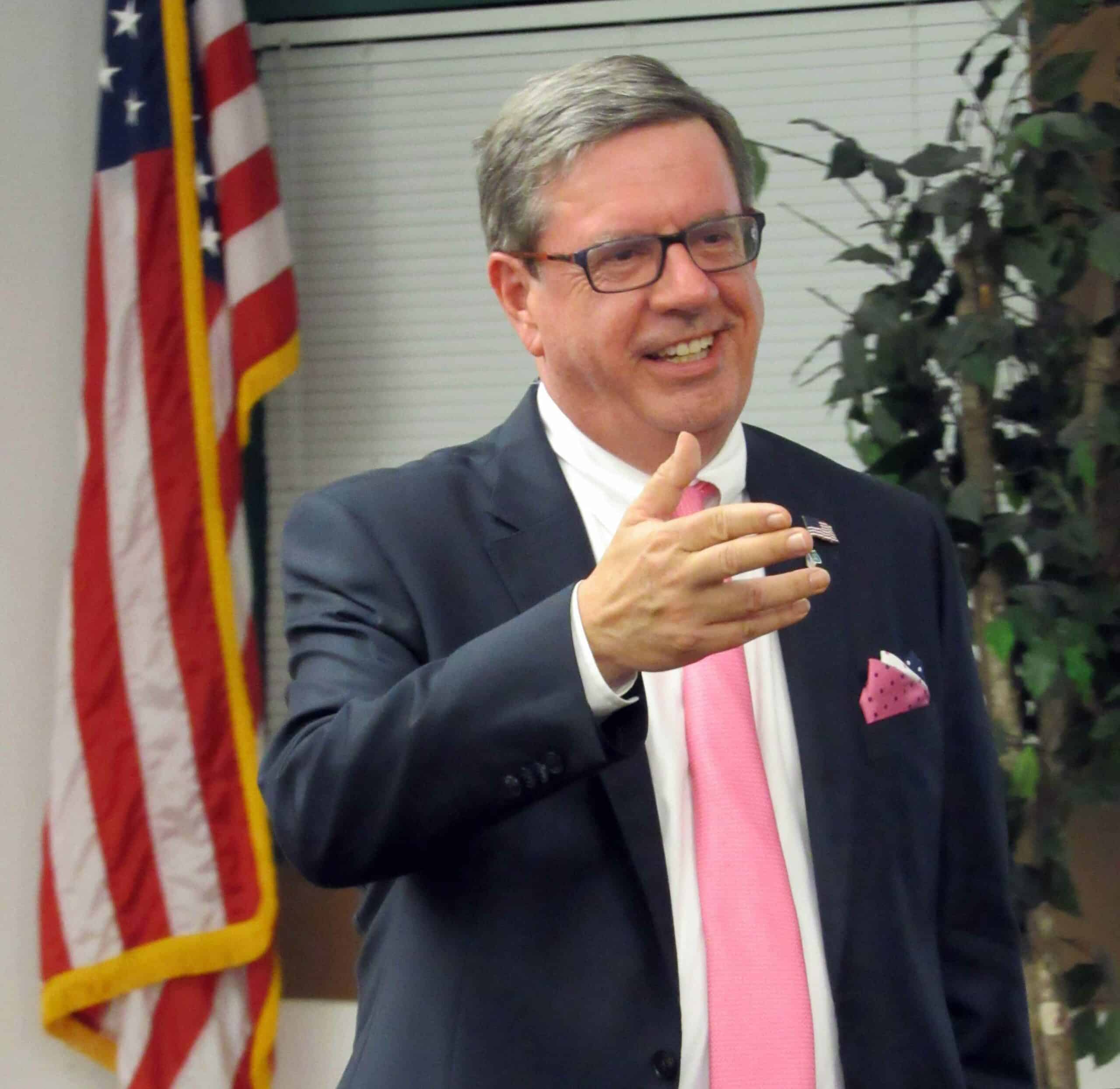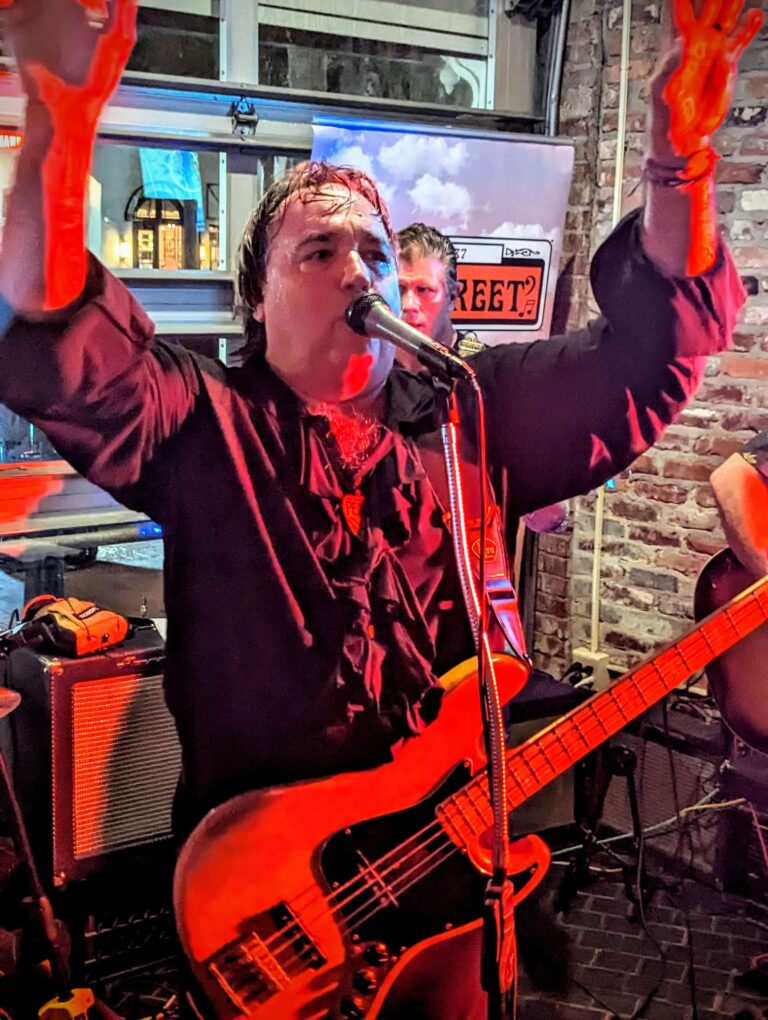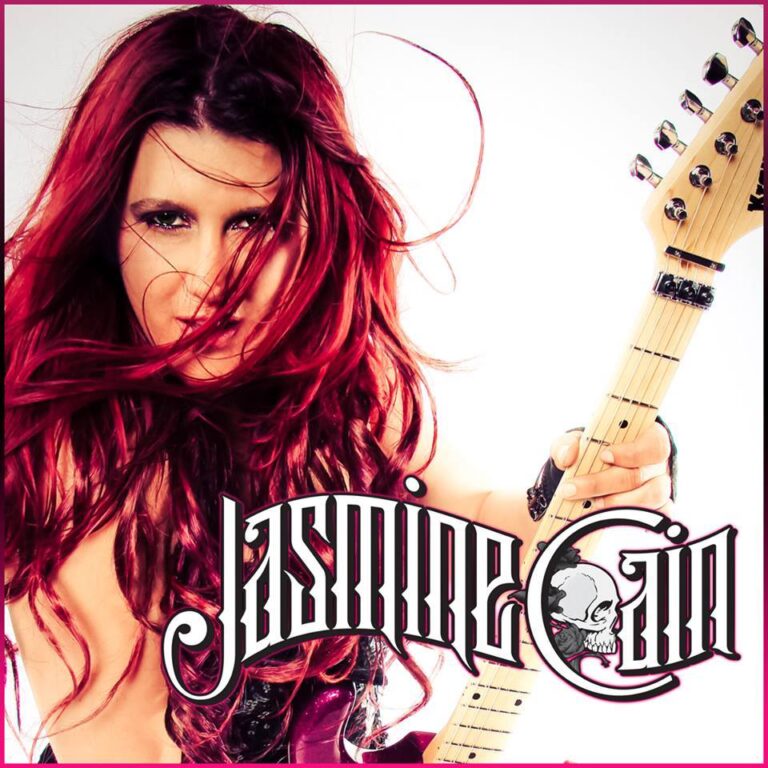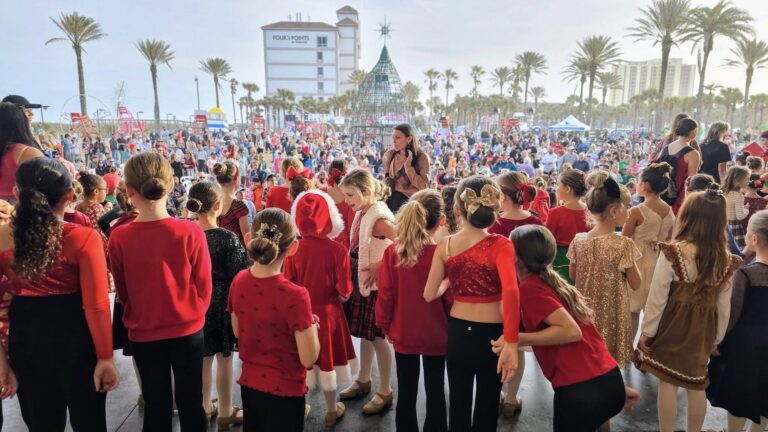The Summer of ‘64
This is a true story about people caught up in world-changing events. It is a story about our past. It is not pretty. It is a story about six-months that would change the First Coast forever.
In the Summer of 1964, world-wide media attention was focused on Saint Augustine. Racial tensions had been escalating since a Federal Court ordered desegregation of schools in Duval and St. Johns County. In both counties, the families of the first black students to attend a white school had their houses burnt to the ground.
Into this maelstrom of hate and brutality steps the unlikeliest of people. Mary Parkman Peabody, the 72-year-old mother of the governor of Massachusetts, arrives on Easter Sunday. Peabody is also the daughter-in-law of Endicott Peabody who taught Franklin Roosevelt. FDR mentions his “old schoolmaster, Dr. Peabody,” in his final inaugural address. “Things in life will not always run smoothly,” Roosevelt remembered him saying. “The great fact to remember, is that the trend of civilization itself is forever upward.”
Mrs. Peabody is an unusual snowbird. She comes to America’s oldest city to get arrested. “We need some old people in this thing,” she tells reporters as she heads to lunch with Robert Hayling and other local African American leaders. She is charged with trespassing and spends the next two nights in a segregated Saint Augustine jail cell. There are 50 “Negro” women in the cell next door.
So many spring-breakers follow Peabody that Police deputize members of the Ancient City Gun Club to keep the peace. They call themselves “Manucy’s Raiders” after their leader, Halstead “Hoss” Manucy. The NY Times describes Manucy as “220 pounds of brawn and belly” in a T‐shirt, jeans and a battered cowboy hat.
Armed with shotguns and C.B. Radios, Manucy and the Gun Club become the de-facto leaders of the segregationists in Saint Augustine. Hoss sees his purpose clearly. “My boys are here to fight niggers,” he tells the press. Shortly thereafter, a mob of angry whites attacks a protest march, viciously beating white reporters and others. There are so many arrests that prisoners are kept outside the jail in a cage called the “chicken coop.”
1964 is an election year. Lyndon Baines Johnson is running for re-election. He is also attempting to push the Civil Rights Act through the Senate. If passed, the Act will end discrimination based on race, color, religion, sex, or national origin. He wants the bill signed into law well before the election. Standing in his way are a group of mostly Democratic Senators led by Johnson’s Republican opponent, Barry Goldwater. They filibuster the bill in the Senate refusing to allow it to come to a vote.
1964 is also an Olympic year. Twenty-year-old Robert Lee Hayes of Jacksonville is one of the favorites. The local athlete has grown up in the segregated South racing other black kids for nickels. Childhood friends call him “the shortest distance between two points.” In May, with the Tokyo games looming later that year, Sports Illustrated pondered the question “how fast” was the star from “a league of small Negro schools?” His football coach at Florida A&M thought he knew the answer. Bob Hayes, he says, is “the fastest man who ever lived.”
In late May, Martin Luther King arrives in America’s Oldest City. Governor Farris Bryant, an avowed segregationist, sends several hundred state troopers to St Augustine to restore “law and order.” At night, the integrationists march from the black neighborhood of Lincolnville to slave market square in the center of town. The slave market itself is occupied by the segregationists led by Manucy, a KKK lawyer from Atlanta, and a preacher from California in a Confederate flag vest named Connie Lynch who announces he is there “to help these embattled good white people in their cause.”
The pattern repeats itself for weeks. The ‘segregationists’ occupy the slave market listening to Lynch preach. “This government was intended to be of the white man, by the white man, and for the white man,” he tells the crowd. Meanwhile, the ‘integrationists’ march around slave market square. Between both groups rows of police with dogs attempt to keep them apart. Violence erupts regularly.
By day the protests move to the all-white beaches. The first day, the protestors are stopped by angry whites. A foreign photographer is bloodied. The next day and for days after, the state police escort the integrated swimmers in and out of the water. They form a V-shaped cordon so that the protesters can wade knee deep into the surf while an angry mob of white’s dance around the outside screaming obscenities. One white resident remarks that she does not understand why the blacks were going to so much trouble to swim there since they had a perfectly good colored beach right down the road.
In June, Martin Luther King is arrested for attempting to eat lunch at the Monson Motor Lodge. King and owner Jimmy Brock engage in a heated debate on the front steps. A week later, seventeen Rabbis are arrested for praying outside the Monson. It is the largest mass arrest of Rabbis in US history.
That same day, two white and five black students jump into the segregated hotel pool. The now iconic pictures, of Jimmy Brock running around the curved pool emptying a bottle of muriatic acid into the water while the bathers scream in terror, runs in newspapers worldwide. The image incites a furor in the North. The next day, LBJ ends the filibuster in the Senate and Brock allegedly puts an alligator in his pool.
The Civil Rights Act becomes law in early July. The Monson and other restaurants desegregate, but not for long. In August, the Klan shows up and pickets the newly integrated establishments. Outside the Monson they carry signs that read “White and Colored people mix here.” Many of the restaurants, probably not all that reluctantly, once again ban blacks. Jimmy Brock goes to the Federal Court in Jacksonville, in the shadow of the Confederate Statue that dominates Hemming Park, and tells Federal Judge Bryan Simpson that the Klan has him “frightened.”
As the Klan marches in St Augustine, the Beatles are preparing to tour the United States for the second time. Jacksonville is one of the planned venues. By City Ordinance, the Gator Bowl is segregated. The Fab Four are not happy. “We never play to segregated audiences and we aren’t going to start now,” John Lennon says, “I’d sooner lose our appearance money.” Despite the fact that segregation is now illegal, the City holds its ground. Finally, in early September, the Beatles release a statement. “We will not appear unless Negroes are allowed to sit anywhere.” The City relents and exuberant ticketholders breath a collective sigh of relief.
Four days later, on September 10th, Hurricane Dora makes landfall at Vilano Beach leaving a swath of devastation in its path. Five people are killed and thousands left without power. In St Augustine, the flood waters run hip-deep through the slave market. It is the first hurricane to hit the first coast in recorded history. Many, on both sides, see it as the wrath of God.
The next morning, LBJ shows up to survey the damage. His motorcade races to the beaches across the Fuller Warren bridge in a fury of sound and motion. He has his picture taken. He stays for ninety minutes.
Several hours later, the Beatles arrive. That night they play the first integrated event in Gator Bowl history in front of over 23,000 screaming fans. They play 12 songs, finishing in a little over half an hour. The winds are gusting so wildly that Ringo’s drums must be nailed to the stage. The music is played over the PA system and difficult to hear over the noise of the wind and the crowd. None of this dampens the enthusiasm of the screaming throng of Beatlemania afflicted youths.
In October, Martin Luther King is awarded the Nobel Peace Prize. St. Augustine’s Police Chief calls the award “one of the biggest jokes of the year. How can you win the peace prize when you stir up all the trouble he did down here?” That same day, across the international dateline, Jacksonville’s fastest man dazzles the world. Churning down the cinder track, a frenzy of knees and elbows, the pigeon-toed runner shocks the crowd in the hundred-meter final, winning by over 2 meters; the largest margin of victory of all time.
In the relay, when Hayes takes the baton, France is in first place and the USA in fifth. Thirty yards into the final leg, as tens of thousands of screaming fans rise to their feet in exultation, the world’s fastest man sprints past everyone. Before the race, a French runner had taunted one of the Americans “you can’t win. All you have is Hayes.” At the finish line, the proud American retorted, “that’s all we need, baby!”
In November, a parade is planned for Hayes in Jacksonville. Because he is black, the Times Union initially refuses to cover the event. A brave young female reporter insists. The next day a picture of Hayes passing Hemming Park runs in the paper. That picture is virtually the first time an African-American has been featured in that publication who was not under arrest. The accompanying article said Hayes looked “shy.” It seems more likely that he was scared to death.
The juxtaposition of two of the images in this story is striking. Both Brock and Hayes are seen by a world-wide audience running around a curve. It is particularly striking because they are running in different directions. With the benefit of hindsight, it is easy to picture one man sprinting into the future as the other tries to trot back the hands of time. However, that was not so clear to the imagination at the time as it is today. Sometimes, as Dr. Peabody taught FDR and FDR taught us, we become dis-enfranchised with the way things are going, but we must remember that civilization always advances. That progress is never linear. It is often more like a drunk staggering down a sidewalk, but it is as inexorable as time itself.
Scott A. Grant is a local Historian and Author. By day he is President of Standfast Asset Management.
- About the Author
- Latest Posts
Scott A. Grant, JD
Fiduciary
Cornell Graduate of History and Economics, Rutgers Law
CEO Standfast Asset Management
Pop Historian
Public Speaker
Author
Newspaper Columnist
As a Cornell graduate, Grant has sharpened his expertise with some of the best. He is known, not only for his lively debate, but as a champion chess player, notable pop historian, financial columnist, and successful business owner. Grant studied economics and history at Cornell before working on Wall Street while earning a Law Degree from Rutgers.
In 2005, Grant moved his family and his investment business, Standfast Asset Management, to Florida. Grant became enamored of the area’s historical events. He has enjoyed sharing these facts with the public and loves meeting seniors that can remember first-hand accounts. By day Scott Grant handles 100 million in private investments. In his free time, you will find him researching at the libraries and museums for details to include in his next history presentation.















